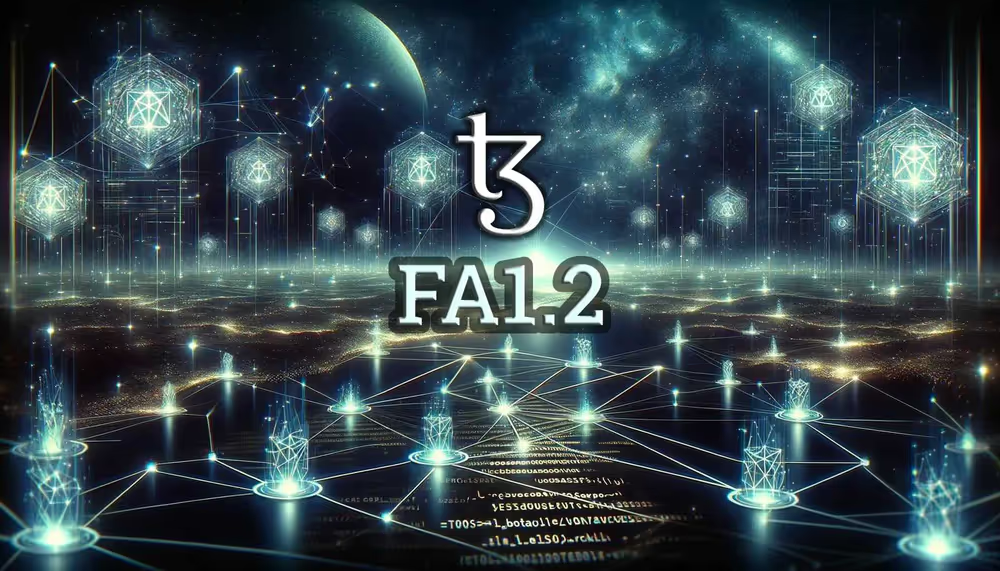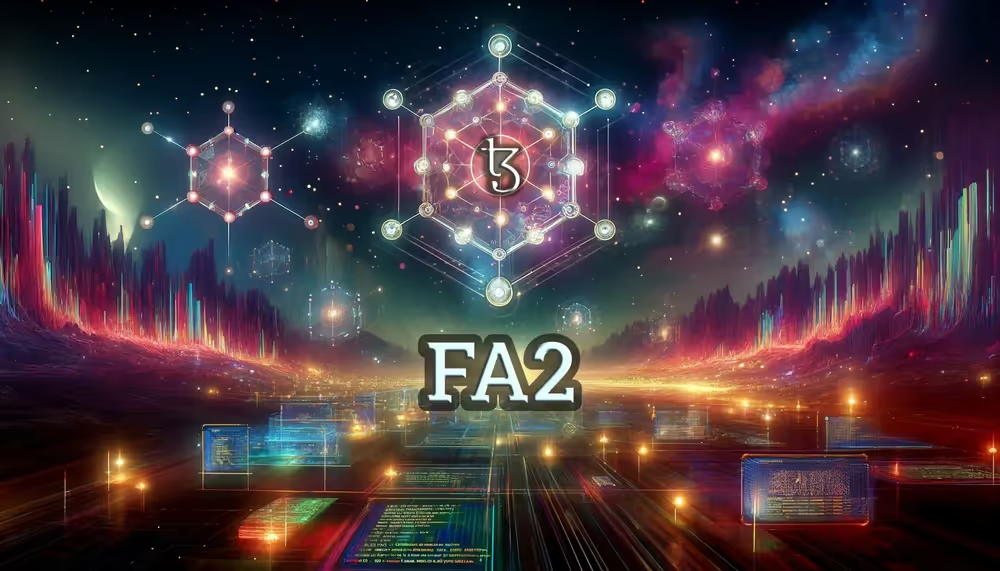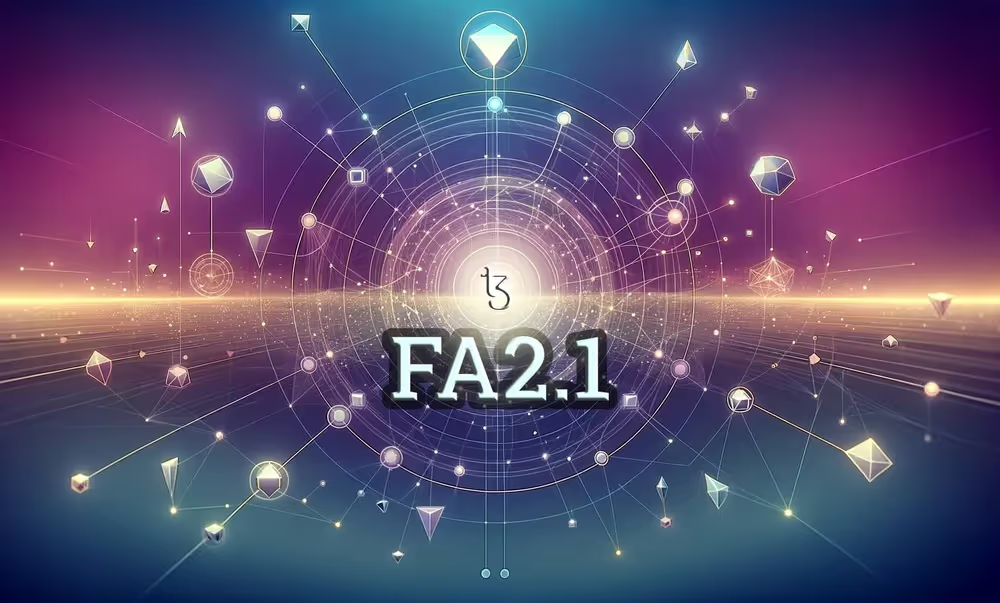Navigating Tezos Token Standards: FA1.2, FA2, and Beyond
What is a “token standard’? What are the different token standards on Tezos? Let’s have a quick look!
6 minute read

At some point in your crypto journey, you’ve probably bumped into terms like ERC20, FA1.2, FA2, BRC20, TRC20, and the list goes on. These are all different types of token standards, and they’re a big deal in the land of smart contracts. Actually, most (if not all) blockchains with smart contracts have their own version of token standards.
This article drills down on what token standards are with focus on the ones used on Tezos. Let’s kick things off by figuring out why token standards are such a big deal in the first place.
What Are Token Standards? #
A token standard defines an interface, along with a set of rules that a smart contract must adhere to, for the token to function within the blockchain ecosystem.
These standards are pivotal for ensuring compatibility across various platforms, such as decentralized exchanges and digital wallets, thereby facilitating a consistent and secure transactional environment.
By defining methods for token transfer and keeping track of these transactions, token standards streamline the creation and management of digital assets, making them accessible to a broader audience.
Imagine a token standard as the rulebook for a sports game, say, football (or soccer, as it’s known in the US).
Just as every soccer game needs to follow specific rules to ensure all players know how to play and what’s expected, a token standard does the same and sets the ground rules for digital tokens so that they can play nicely in the blockchain world.
This rulebook stipulates how a token can move around the field (the blockchain) in terms of what is allowed and what isn’t and thereby making sure they can pass between players (wallets and exchanges) smoothly without any mix-ups.
These rules are super important because they make sure every token, no matter who created it, can work together with all the other parts of the blockchain ecosystem.
By laying down the rules for how tokens can be passed around and keeping score of who owns what, token standards help everyone — developers, users, and services — stay on the same page, making it easier for more people to join in the game.
In the context of Tezos, these guiding principles are embodied in what are known as Financial Applications (FA) standards. Let’s look into these standards more closely to understand their significance and functionality.
FA1.2: laying the foundation #
The FA1.2 standard is the first token standard created on Tezos and acts much like a blueprint for building and managing digital currency within the Tezos blockchain environment.
Imagine it as the initial set of instructions for crafting uniform, interchangeable digital coins — similar to how the ERC-20 standard works for Ethereum.

This blueprint focuses on setting up a detailed ledger, akin to a vast, digital ledger book, which meticulously tracks the ownership and distribution of these digital coins.
It ensures every transaction, whether it’s moving coins or tokens from one digital wallet to another or granting someone permission to spend coins or tokens on your behalf, is recorded and executed according to the rules.
This standard was pivotal in establishing a reliable system for tracking digital assets, serving as the groundwork for more sophisticated forms of digital assets and interactions that could be built on top of Tezos.
FA1.2 was the essential first step, paving the way for future innovations and more complex token standards that further enrich the Tezos ecosystem. For more information on the FA1.2 standard, check out the Tezos Improvement Proposal 7 (TZIP-7).
FA2: a unified approach to token standards #
Building on the foundation laid by FA1.2, the FA2 standard introduces a comprehensive framework capable of supporting various token types:
- Fungible tokens, for assets that are identical and interchangeable
- Non-fungible tokens (NFTs), for unique, indivisible assets
- Non-transferable tokens, representing rights or memberships that cannot be traded
- Multi-asset contracts, enabling the management of diverse assets within a single contract

FA2’s versatility lies in its ability to accommodate a wide range of use cases, from digital art to real estate, through a unified standard. It not only simplifies the development process but also enhances interoperability across services and applications within the Tezos ecosystem.
More info on the FA2 standard can be found in the Tezos Improvement Proposal - 12 (TZIP-12).
Moving forward: the evolution to FA2.1 and beyond #
Moving forward, the exploration of token standards in Tezos does not stop at FA1.2 and FA2. As the Tezos blockchain ecosystem continues to evolve, so too will the standards that support it.
Currently, there are already ongoing discussions and development for the FA2.1 standard.

The FA2.1 extension aims to integrate additional protocol functionalities while ensuring complete compatibility with existing applications that use the FA2 standard. Some of the new features discussed to be added are:
- “Events” that provide a solution for the discoverability challenges faced by indexers, enabling them to detect when a token is transferred, particularly when it occurs outside the defined transfer entry point (such as minting, burning, etc.).
- “On-chain views” that facilitate the seamless sharing of information between smart contracts. For the sake of maintaining compatibility with contracts already in operation, callback views are preserved.
- “Tickets” which offer a method for representing tokens externally from smart contracts, allowing their transfer without necessitating a call to the originating contract or altering its state. In the context of Tezos rollups, tickets are utilized to represent Layer 1 assets within Layer 2 environments (i.e. Etherlink).
- Moreover, the concept of a “finite allowance” is introduced, allowing a user to authorize the expenditure of a specified amount of tokens, a feature inspired by the FA1.2 standard.
To follow or join the discussion, check out the Tezos Agora thread about the FA2.1 token standard or visit the Tezos Improvement Proposal - 26 (TZIP-26).
Wrapping up, it’s clear that the evolution of Tezos is on a great path with FA1.2, FA2, and the excitement around FA2.1.
All this might seem a bit technical or niche, but it’s actually a big deal for the builders who create the projects that we all use and anyone interested in how digital tokens and blockchain technology are evolving.
If you are interested in more details about Tezos token standards, check out OpenTezos and the Tezos developer documentation.